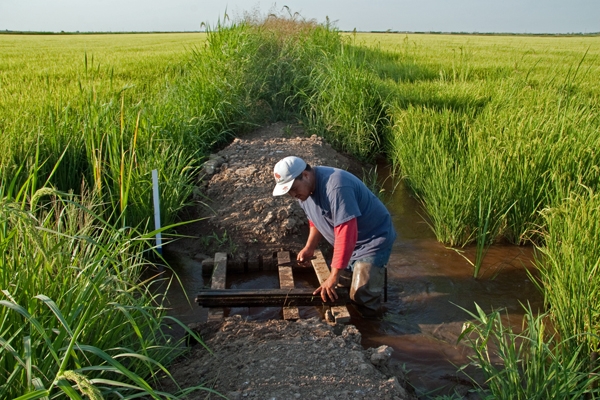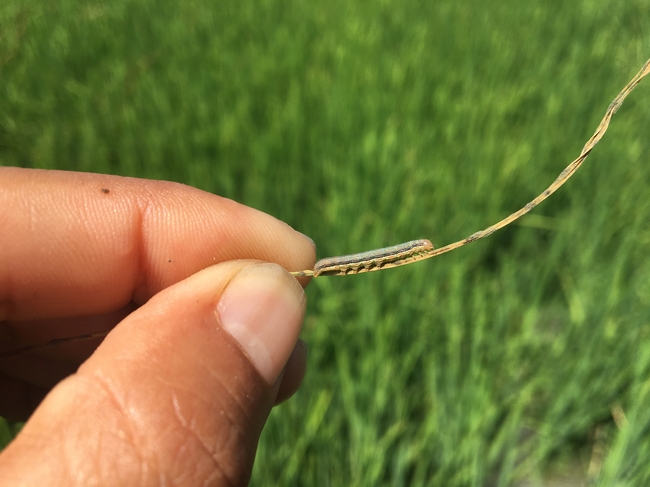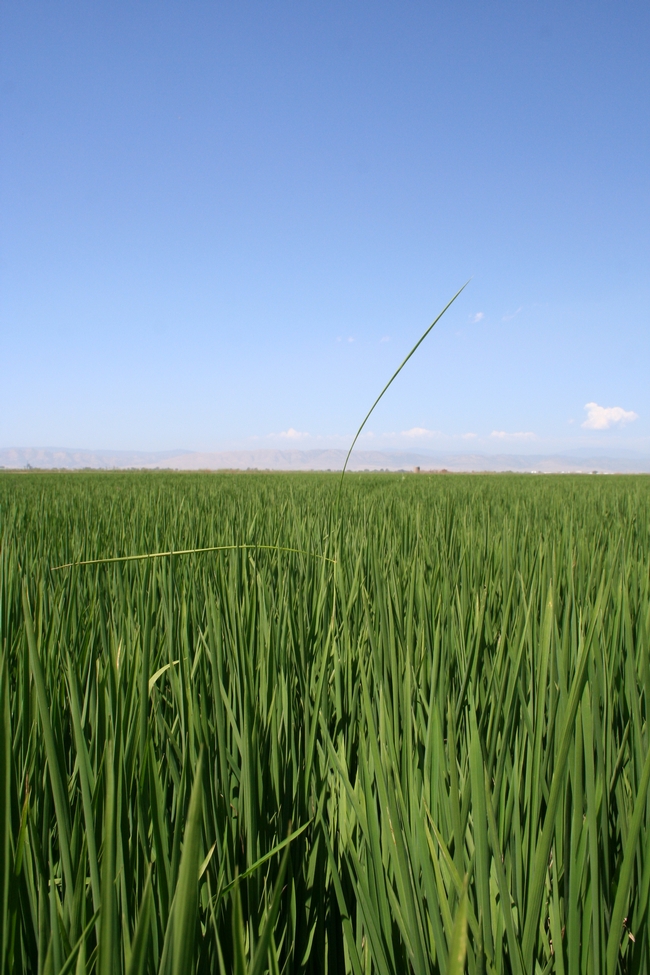- Author: Bruce A Linquist

It is that time of year again. Rice is heading and our thoughts are turning to harvest. As we have been doing since 2015, we will be running the UCCE Rice Yield Contest. We continue to learn a lot from this contest which we share with all of you. This week we picked up the prize for the winner. It is a John Deere Gator (see picture) and is made possible by our generous sponsors:
FMC, Gowan, Nichnio, UPL, Valent, Valley Truck and Tractor, and Wilbur-Ellis.
Details can be found at http://rice.ucanr.edu/Rice_Yield_Contest/, but briefly,
- You need to enter by Aug 25. This is the day of the Rice Field Day. We will have a place to sign up there if you have not already done so.
- You are competing with growers in your general region of the Sacramento Valley.
- We have made some changes to the contest rules so that participation is as minimally disruptive to your harvest operations as possible.
- You must harvest a minimum of 3 continuous acres of rice (most growers harvest more in order to fill a set of doubles). The grain will be put in an empty trailer and taken to a drier for weight and moisture content. The exact area will be measured and yields determined based on weight and grain moisture.
- We will be present for the entire operation (harvest to drier).
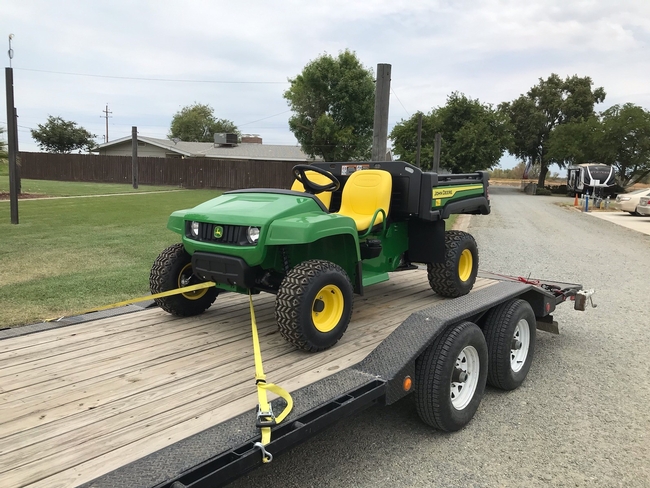
- Author: Bruce A Linquist
Driving this week, I saw quite a few fields with heads starting to show up so drain time is around the corner. Earlier than normal planting and a warm early season means that the crop is going to be harvested earlier than normal. Soon growers are going to begin making the decision as to when to drain the field in preparation for harvest. Cass Mutters is the only one I am aware of that has done research on this and he suggested you could drain safely 21-24 days after heading. A few thoughts on this.
I think most growers are a bit reluctant to drain this early, given the risk of lower quality if soil dries out too quickly.
- Drain time will be soil dependent. Some soils dry out faster than others.
- This year with a lot of fallow fields and pump usage, the “typical” hydrology of fields is different. Pumps can lower ground water tables in their near vicinity, perhaps causing water to percolate more readily downward and the soils dry up faster. Also rice fields adjacent to fallow fields may lose water faster due to lateral water movement towards dry fields.
- If the weather is really warm and dry (especially with north winds), growers may want to hold water a bit longer as well due to increased ET.
All that said, growers could save water by stopping irrigation early and allowing water to naturally subside. This is as opposed to applying irrigation water until you are ready to pull the boards at the end of the season. As a rule of thumb, ET losses are about ¼ inch a day. So, if you have 4 inches of water in your field, that would keep the field flooded or saturated for about 16 days. Given that water may drop faster this year (due to reasons mentioned above), it may be safer to plan for about ½ inch loss a day. So, let use an example of a grower who typically pulls the boards at 25 days after heading and expects the surface water to be drained from the field by 28 days. If this grower has 5 inches of water in the field, this water would last about 10 days. Therefore, irrigation water could be halted at 18 days after heading; and by 28 days, the field water would be similar as if they pulled the boards at 25 days. This would save one week of irrigation water.
Obviously, how fast water drops in a field once the water has been turned off is soil, year and location dependent. As we go into the future, where water limitations may become more frequent, it would be a good idea for growers to track how fast water drops in a field when boards are in place and no irrigation water is coming in. All you need is a stake in the field with 1” markers and simply record how much the water lowers each day. Keep in mind that in fields with a slope, the upper checks may drain into lower checks, so the stake should be in the upper check which will dry out the fastest. When doing this, make note of if adjacent fields are flooded or not or if a well is close by. Keeping records for a few years, will help farmers make more informed decisions in future years.
Photo: Jim Morris, CRC
- Author: Whitney Brim-DeForest
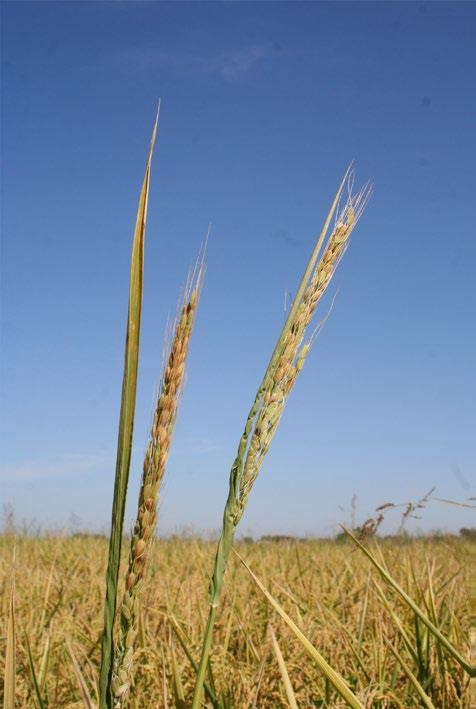
Date: August 3, 2021
Location: UCCE Sutter-Yuba Office
142A Garden Highway, Yuba City
Free (lunch provided)
Meeting Agenda
9:00–9:30 am Research Updates 2020-2021 (Whitney Brim-DeForest, CE Rice Advisor)
9:30–10:00 am Weedy Rice Survey 2020 (Luis Espino, CE Rice Advisor)
10:00-10:15 am Weedy Rice Identification (Luis Espino, Whitney Brim-DeForest, CE Rice Advisors)
10:15–10:30 am —BREAK— (plants to view)
10:30–10:45 am Non-conventional Path to Pesticide Registration (Roberta Firoved, California Rice Commission)
10:45-11:00 am Preventing Spread of Weedy Rice with Certified Seed (Timothy Blank, California Crop Improvement Association)
11:00-11:15 am Weedy rice emergence under various environmental conditions (Liberty Galvin, PhD Candidate, UC Davis)
11:15 am —LUNCH—
This project is sponsored with funding from the California Rice Commission.
**CE credits (CCA, DPR) pending**
- Author: Luis Espino
The armyworm monitoring network started a few weeks ago. We have traps on 15 sites across the Sacramento Valley and three sites in the northern San Joaquin Valley. Moth numbers are starting to increase mostly in the northern part of the Sacramento Valley, and small worms have been found at very low densities (see pic below).
The armyworm moth numbers are updated weekly on our armyworm website. This year, we are using AgPestMonitor to show the trap catches per location. On the map, click on a location of interest and a graph showing the number of moths trapped will show up below the map. No registration is required.
To receive a weekly email with a brief description of the armyworm situation and a link to the moth numbers once they are updated, you can subscribe here.
Armyworm larva size found on 18 June 2021, Glenn County.
- Author: Luis Espino
I got a question from a grower recently about Bakanae. The grower is seeing bakanae affected plants in the same field where the disease was observed last year. The question was if Bakanae can survive in the field. Studies from Asia have shown that resting structures of the Bakanae fungus can survive in the soil for up to four months. However, infested soil is not considered a major source of Bakanae inoculum. There could be some survival of the fungus in the soil, resulting in infections the following season; infection rate would be low. In cases of high infection rates, the disease was most likely transmitted by seed.


